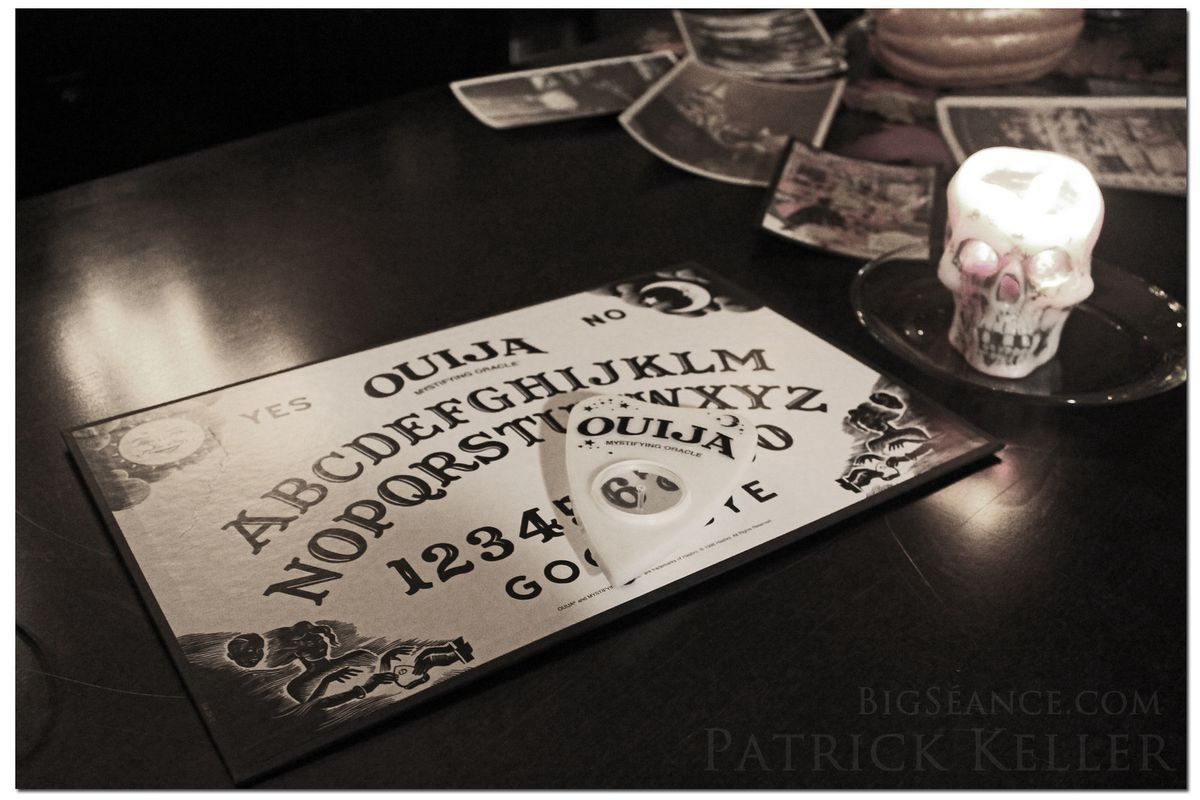Table of Contents Show
The Ouija board (pronounced “wee-gee”) is a popular feature in horror films such as Ouija, The Exorcist, and Paranormal Activity (( “Most Popular Ouija Board Movies and TV Shows.” IMDb. IMDb.com. Accessed October 6, 2020. Most Popular Ouija Board Movies and TV Shows. )). The board is often used in movies to summon demonic spirits or whatever supernatural nightmare occurs in the movie. But what is an Ouija board?
To put it simply, the Ouija board is used to communicate with the dead because it acts as a kind of bridge into the spirit realm. When using the board, spirits will move the planchette in order to “type out” messages to the living. The board itself is usually a piece of wood that features the words “yes” and “no” in the upper corners of the board, the alphabet, the numbers 0-9, and the word “goodbye.” Each board also comes with a planchette (a pencil-less indicator) that participants will place one finger on.

During the session, the planchette will move across the board to indicate a selection of the words or numbers. These selected letters and numbers are used to spell words like names, events, or even full sentences.
But what makes the planchette move? Skeptics say that the Ouija board is a prime example of the ideomotor effect (( “Ideomotor Effect.” Psychology Wiki. Accessed October 6, 2020. Ideomotor effect. )). The ideomotor effect claims that people will make unconscious movements, like jerking in reaction to pain. This effect is used to discredit the legitimacy of Ouija boards because it argues that people will unconsciously move the planchette toward letters, numbers, and words because human bodies just like to move.
But for believers, what makes a planchette move is simple: spirits. Some people truly believe in the mystical power of Ouija boards and its ability to communicate with the dead. However, this article does not seek to demystify or add to the mystery of the Ouija board, because it’s the Ouija board’s history and effect on people that is far more interesting than its legitimacy as a supernatural object.
How To Use An Ouija Board
Ouija boards are pretty easy to use. There are not too many rules, and they are relatively flexible. But for the best experience, you’re going to need a couple of things. You’ll need an Ouija board, a planchette, candles, a medium (or someone who will be the one to ask the spirits to “speak” via the board), a table, two people who will rest their fingers on the planchette without moving it, and that’s it.
I will emphasize that there should only be a couple of people using the board at the same time—not 25 teenagers sharing one board like how you see in the movies. The only other important rule is that you MUST move the planchette over the word “goodbye” at the end of the session, or the evil spirits will get you.
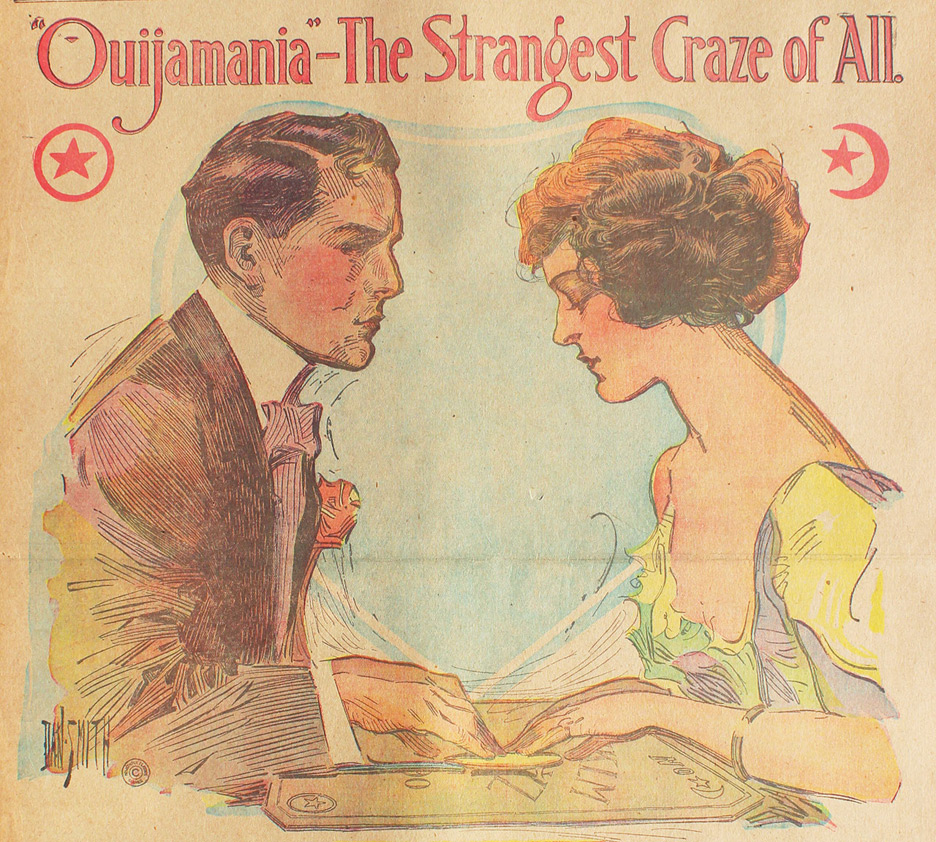
Most websites recommend coming into the experience with the “right” mindset. In order to achieve this mindset, you make a conscious effort to remain in control of the experience instead of getting too swept up in what the board is saying (( Wagner, Stephen. “How Do You Use an Ouija Board?” LiveAbout. Accessed October 6, 2020. The Complete Guide to Using an Ouija Board Properly. )). Playing with the board should be a fun experience, not a terrifying ordeal that puts a damper on your day.
The Legal Struggles Of Ouija Boards
Ouija Boards have been manufactured for quite some time—since 1890, to be exact. First manufactured by Elijah Bond and Charles Kenner in Baltimore, the Ouija boards were the source of some drama at the beginning of the 20th century (( “Ouija Board: Topics in Chronicling America: Introduction.” Research Guides. Accessed October 6, 2020. Research Guides: Ouija Board: Topics in Chronicling America: Introduction. )). In fact, Ouija boards have quite a history in the American courtrooms.
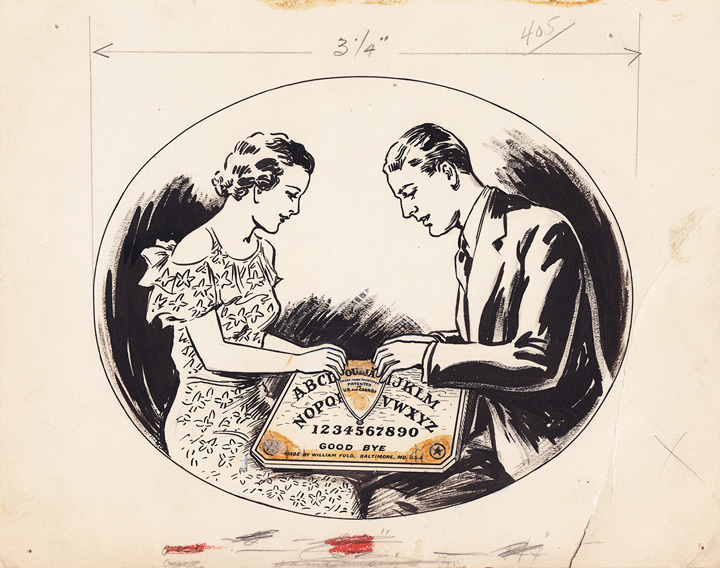
In 1891, William Fuld bought the rights to create and sell the Ouija board. However, in 1920, William and his brother, Isaac Fuld, ended up in court over the rights to the board. Isaac had been making and selling a rip-off version of the Ouija board, which he marketed as the real deal. As a result, William sued Isaac. The judge ruled in William’s favor, and Isaac was banned from making his knock-off board (( Charlevoix county herald. (East Jordan, Mich.), 25 June 1920. Chronicling America: Historic American Newspapers. Lib. of Congress. <Charlevoix County herald. (East Jordan, Mich.) 189?-1953, June 25, 1920, Image 3> )). Apparently, both greed and Ouija boards have a knack for tearing families apart.
Later, in 1922, Ouija boards made it all the way to the Supreme Court. Essentially, the Baltimore Talking Board Company wanted the boards to be taxed as children’s toys, not sporting goods. Why this was such a point of contention, I do not know, but the Supreme Court decided not to rule on the case. Much to the Company’s dismay, the Supreme Court decided to uphold the lower courts’ decision to continue to tax the boards as sporting goods (( Bisbee daily review. [volume] (Bisbee, Ariz.), 06 June 1922. Chronicling America: Historic American Newspapers. Lib. of Congress. <Bisbee daily review. [volume] (Bisbee, Ariz.) 1901-1971, June 06, 1922, Image 1> )).

It’s very interesting to see a board that claims to be able to communicate with the other side get so caught up in the minutiae of capitalism. Despite Ouija boards encounters will earthly procedures, many believe that Ouija boards can indeed connect them with the dead.
Can The Dead Make Their Way Back To Living?
If you were to ask people from the late 1800s to the early 1900s if they thought Ouija boards were real, most would probably say yes. One particularly peculiar story involves a woman named Pearl Curran. In the early 1900s, Pearl Curran used the board to communicate with a spirit named Patience Worth. With the board, Pearl Curran transcribed a lot of poetry, novels, and other writings she claimed were written by Worth.
Overall, her work was well-received by critics, and her work is available online (( “Ouija Board: Topics in Chronicling America: Introduction.” Research Guides. Accessed October 6, 2020. Research Guides: Ouija Board: Topics in Chronicling America: Introduction. )). It seems that Worth finally got her chance to shine. And it was all thanks to the mystical Ouija board.
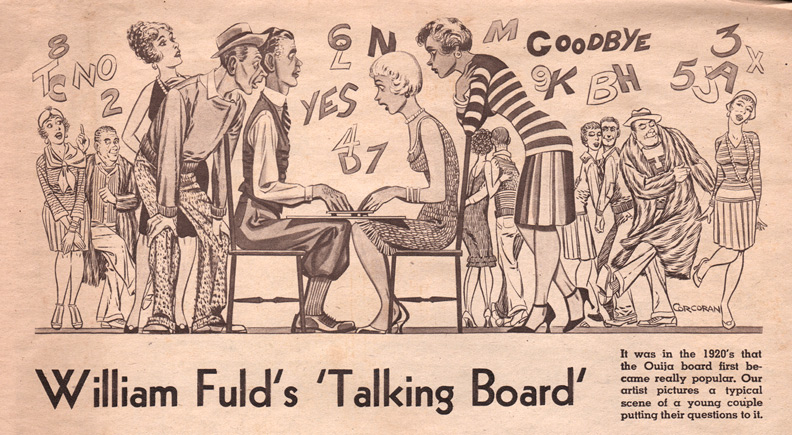
Another interesting story comes from a newspaper story from 1890. In this story, a group of men decided to jokingly play with an Ouija board, and they left the encounter really shaken and disturbed. During the session, the men talked with a couple of spirits, and even a person who was still alive. However, the odd part of their experience happened when the last spirit they spoke to claimed to be an agent of the devil, which proved to be too much for the men. In fact, they had such a bad experience with the Ouija board that they decided to talk to the press about their experience.
The Evils Of The Ouija Board
This bad experience that these men from the 1890s had is exactly the kind of experience the Catholic Church tries to keep people away from. Most members of the cloth, specifically the Catholic Church, would agree with the believers from 100 years ago. The Catholic Church seems to largely believe in the power of the board, and it strongly warns people against using it. True to their history, the Catholic Church wholeheartedly condemns anything involved with divination or the occult, and the Ouija board is no exception.
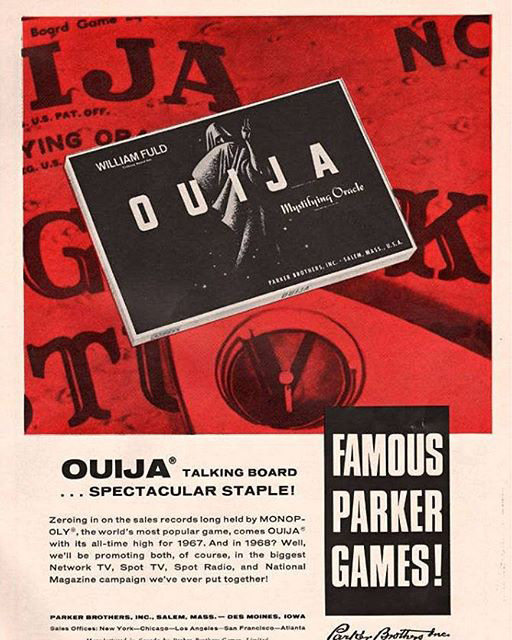
The Catholic Church fears that the Ouija board will bring evil spirits, like the Devil, to Earth. In other words, the Catholic Church practically drives the “Ouija boards are legit” train, which I’m sure the Hasbro sales department loves.
Are Ouija Boards Still Popular?
Since their creation, Ouija boards have come in and out of fashion. As of today, they’re catalysts for horrors in scary movies, and they’re sold as children’s toys and casually enjoyed as a way to spend some time. However, their profitability does bring up some questions about their mystical nature. Because can anything mass-produced really be supernatural? Do Ouija boards really connect the living with the dead? Well, that’s for you to decide. Just remember to say “goodbye.”
